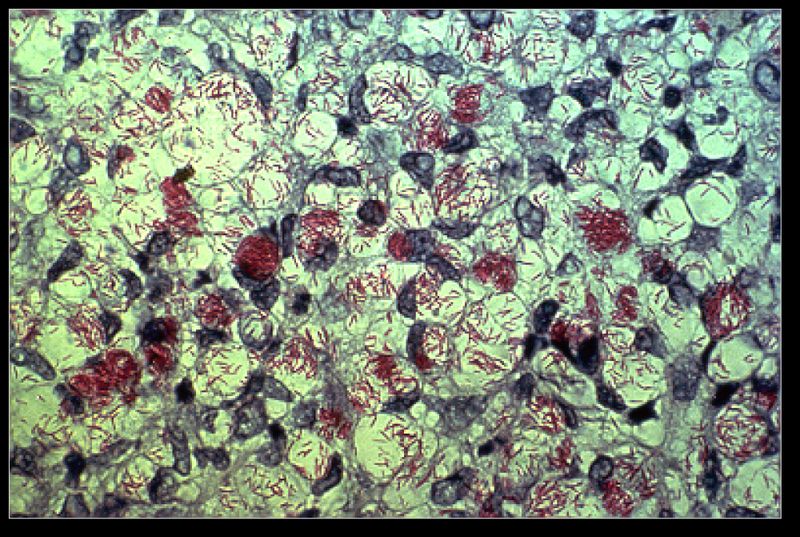Leprosy causes
|
Leprosy Microchapters |
|
Diagnosis |
|---|
|
Treatment |
|
Case Studies |
|
Leprosy causes On the Web |
|
American Roentgen Ray Society Images of Leprosy causes |
Editor-In-Chief: C. Michael Gibson, M.S., M.D. [1]
Overview
Cause
Mycobacterium leprae is the causative agent of leprosy.[1] An intracellular, acid-fast bacterium, M. leprae is aerobic, gram-positive, and rod-shaped, and is surrounded by the waxy cell membrane coating characteristic of Mycobacterium species.[2]
Due to extensive loss of genes necessary for independent growth, M. leprae is unculturable in the laboratory, a factor which leads to difficulty in definitively identifying the organism under a strict interpretation of Koch's postulates.[3] The use of non-culture-based techniques such as molecular genetics has allowed for alternative establishment of causation.[3]

References
- ↑ Ryan KJ, Ray CG (editors) (2004). Sherris Medical Microbiology (4th ed. ed.). McGraw Hill. pp. 451–3. ISBN 0838585299.
- ↑ McMurray DN (1996). Mycobacteria and Nocardia. in: Baron's Medical Microbiology (Baron S et al, eds.) (4th ed. ed.). Univ of Texas Medical Branch. ISBN 0-9631172-1-1.
- ↑ 3.0 3.1 Bhattacharya S, Vijayalakshmi N, Parija SC (2002). "Uncultivable bacteria: Implications and recent trends towards identification". Indian journal of medical microbiology. 20 (4): 174–7. PMID 17657065.